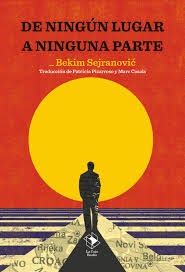
Original language: German
Original title: cat and mouse
Translation: Carlos Gerhard
Year of publication: 1961
Valuation: Recommendable
Günter Grass published The cat and the Mouse only two years after The tin drum, undoubtedly his most celebrated book, although the applause is by no means unanimous. The two books have in common the temporal setting, the Second World War, and the geographical setting, the free city of Danzig where Grass himself was born, an enclave of German culture in Poland quickly annexed by the Reich. And I think little more, because here it is a rather short novel cut into a pattern of a mostly realistic nature. So the detractors of Tambor They don’t have much to fear.
Grass presents us with a story about teenagers that is probably quite autobiographical, kids who kill time by making forays to a semi-sunk minesweeper that is their meeting point and the setting for the small adventures typical of the age. In the small group one stands out Mahlkea young man with an extravagant touch and a deep devotion to the Virgin (I’m not really sure if it’s the one from Czestochowa).
The narrative comes to us from the mouth of Pilenz (we find out his name on page 130, after the middle of the book), the best friend of Mahlke, of whom he is a kind of squire. The daily life of these kids fills the story with the incidents of student life, helping at mass (let’s not forget the strong Catholic-Polish influence), and naturally sex, which gently but intensely hovers over the entire narrative, revealing the lack of definition and the oscillations typical of age. One might even think that The cat and the Mouse was, due to the theme, a work of youth before the Tambor (there is a very small nod to the larger work, although this does not cancel the possibility either).
In any case Mahlke He is a unique and quite interesting character. The boy is individualistic, he goes on his own and arouses admiration for his originalities, as well as a certain envy and a kind of respectful rejection. Perhaps somewhat narcissistic, he likes to attract attention and perhaps see how others imitate his initiatives, only to immediately abandon them and replace them with others. This type of mute and perhaps involuntary leadership is maintained when the war, until then present in the background, begins to closely touch the lives of the kids, with talks to harangue the fighting spirit and invitations to voluntarily join the ranks. The reality of the historical moment does not burst into their lives but rather soaks up their daily lives until it ends up pointing out to them, as a sign of their arrival at adulthood.
The narration is entertaining and at the same time requires a little effort, because Grass likes to hide information, he suggests and forces us to read between the lines, and he has no qualms about dropping questions without pointing out any answers. What might seem like a trait of creative arrogance has, I believe, rather the character of a game, as does prose itself, capricious and brittle, rushed, which jumps without warning from the first person to the second, suddenly introducing a new narrator who immediately disappears again, or combines detailed descriptions (sometimes unjustifiably detailed) with fleeting images or brief dialogues immersed in the story. A set that is sometimes somewhat disconcerting but in return leaves a pleasant feeling of freshness and spontaneity.
The impression remains of a rather light work, which in a somewhat tangential way is a portrait of that inner Germany seen by some teenagers from its streets while not so far away, inside and outside, devastation and death are being sown. And it is curious how a story of small length and rather little relevance is found, within that famous Danzig Trilogy, as sandwiched between The tin drum y dog yearsthe two large-scale works that Grass dedicates to that same historical period.
Also by Günter Grass reviewed in ULAD: The tin drum
Source: https://unlibroaldia.blogspot.com/2024/02/gunter-grass-el-gato-y-el-raton.html


